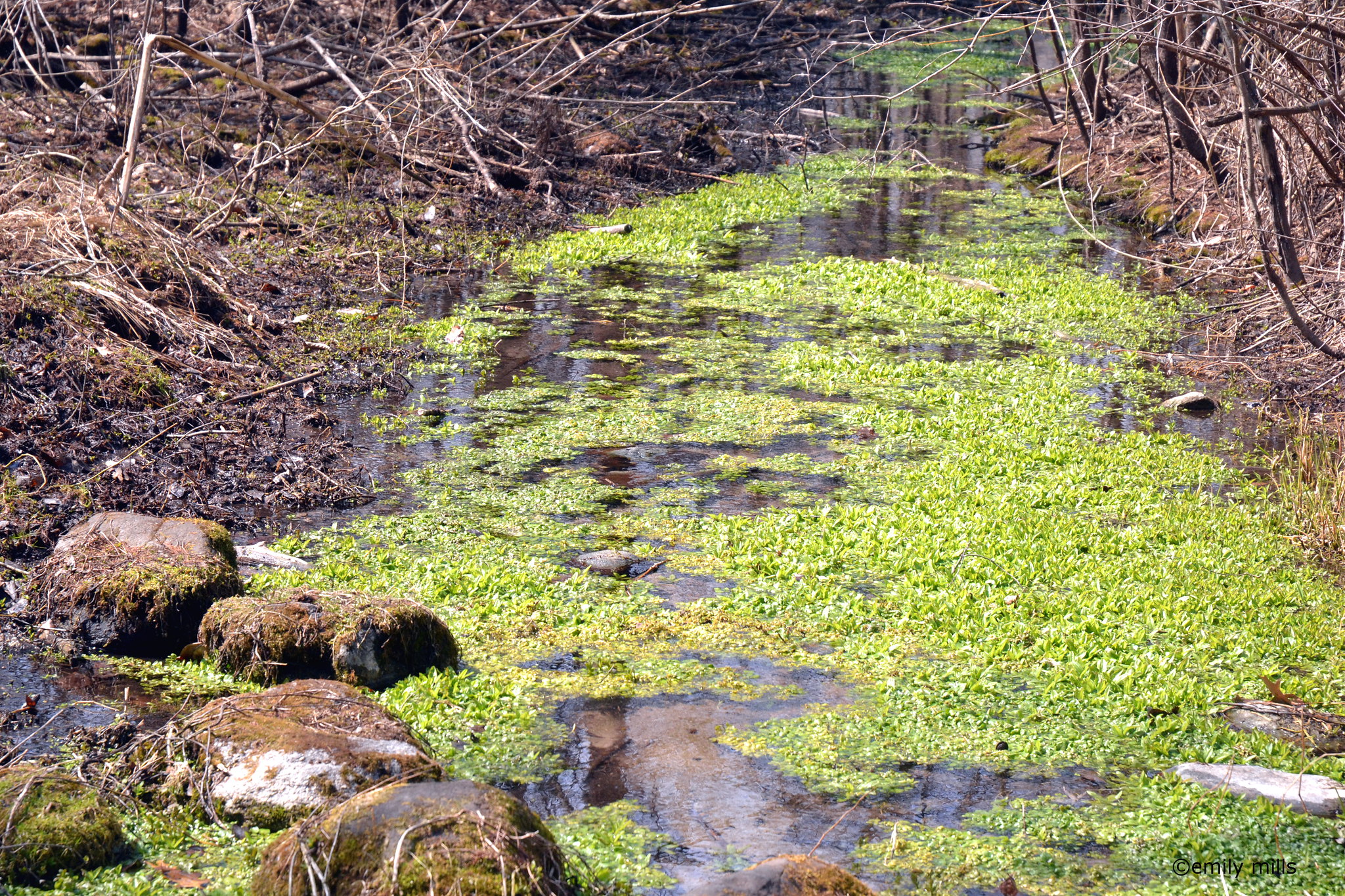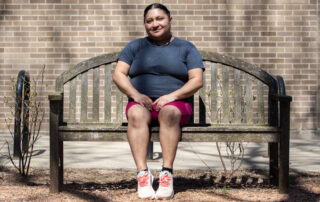Carpets of watercress cover many Wisconsin streams and springs in the spring. The tender green leaves are a bright and nutritious taste of the season if you know how and where to find it.
An early spring day in 2012, two young women — chef and forager Dani Lind and producer Erika Janik — met to gather wild watercress in the Driftless Area. The creek is swollen with snow melt. You can hear water gurgling, songbirds overhead, the sound of scissors snipping fresh greens. A timeless ritual, and a moment in time.
Chef and forager Dani Lind and Wisconsin Life producer Erika Janik take us hunting for watercress in the Driftless area.
This transcript has been edited for brevity and clarity.
Dani Lind: (Watercress) grows all year round — it’s a perennial, and in really protected spots, you can harvest it all winter if it’s a spring that stays open. Summertime is generally not the best time; it doesn’t like the heat. It’ll get kind of yellow and it’ll have little flowers on it and it’ll get super spicy and kind of bitter.
Erika Janik: So, you just snip off the tops?
DL: Yep, snip off the tops. You never want to pull it out unless you’re trying to thin out the patch a lot. But if you’re someplace where you’re wild crafting it, it’s definitely the considerate and responsible thing to do to leave the roots in the ground so they can just grow right back.
Watercress isn’t native to the U.S., but it’s so naturalized that it just about might as well be. When people would come west, they would bring a little bit with them and plant it. And it pretty much just took over after that.
(Dani Lind gestures toward the creek)
Well, the creeks around here are pretty darn clean. Streams that are good trout streams are good indicators of a pretty clean creek.
There’s a trout! A whole bunch of them, little babies.
EJ: It moves so fast; I’ve never seen a fish move so fast. What’s your favorite thing to do with watercress?
DL: You know, this time of year, I really like just having a little pile of it on the side of my plate, just about no matter what I’m eating.
But it’s really good in salads, really great in sandwiches. It’s really awesome (to) put it in an omelet — just, like, right when you’re almost done cooking the omelet, just set it there and fold it over and it just barely wilts — that’s really good.
You can make watercress soup just with onions and potatoes and a little bit of milk or cream.
It’s one of the most concentrated sources of nutrition you can find.
(Dani Lind looks at the creek)
That’s probably more watercress than we can eat today, huh?
EJ: It is quite a bit. I’m going on a strictly watercress diet.
DL: You’d be so healthy. We could start the new trend, the new detox watercress diet. Move over grapefruit diet, move over maple syrup, lemon juice cleanse. I’d much rather eat watercress.
==
Editor’s note:
February 2021 marks “Wisconsin Life’s” 10th anniversary on Wisconsin Public Radio. As part of the celebration, “Wisconsin Life” co-founder Anne Strainchamps reflects on why she helped start the program.
“From the beginning, ‘Wisconsin Life’ was an experiment in rethinking what we call news,” said Strainchamps. “Beyond the breaking stories and big events shaping our time, life as we actually know it unfolds on a smaller, slower, more intimate scale. What if alongside the headlines, we brought you news of the everyday? What would it be like to document changing seasons, conversations with neighbors, local lore?”
She chose to share this watercress story, which she produced and edited, as part of the anniversary celebration, saying, “It was a very simple sound portrait that was memorable because of the delicacy of those early spring sounds. I loved the mental image of two young women kneeling by a cold stream, picking something wild to eat.”












